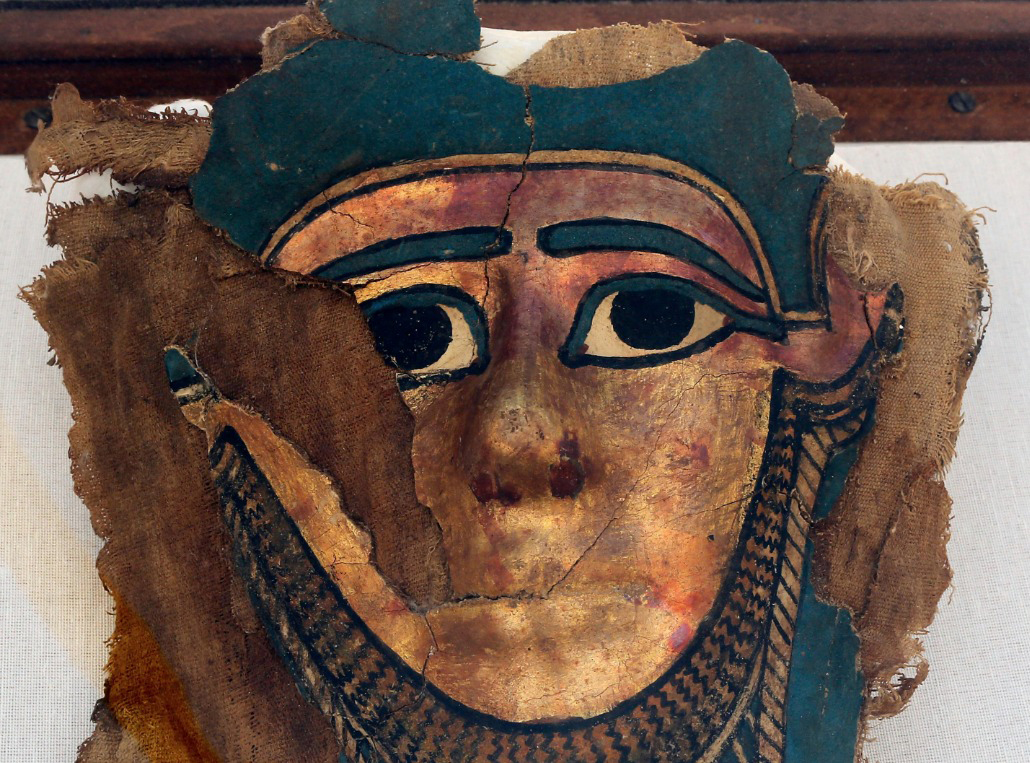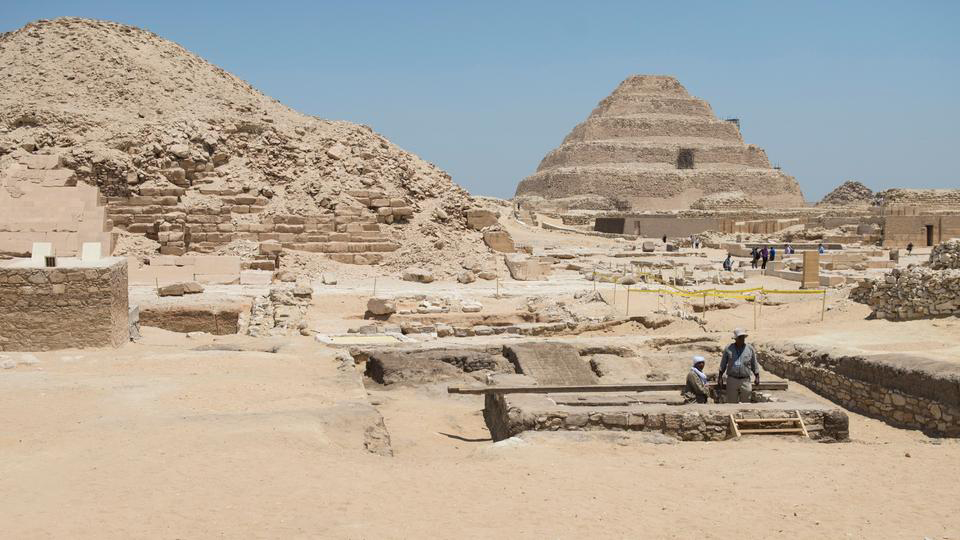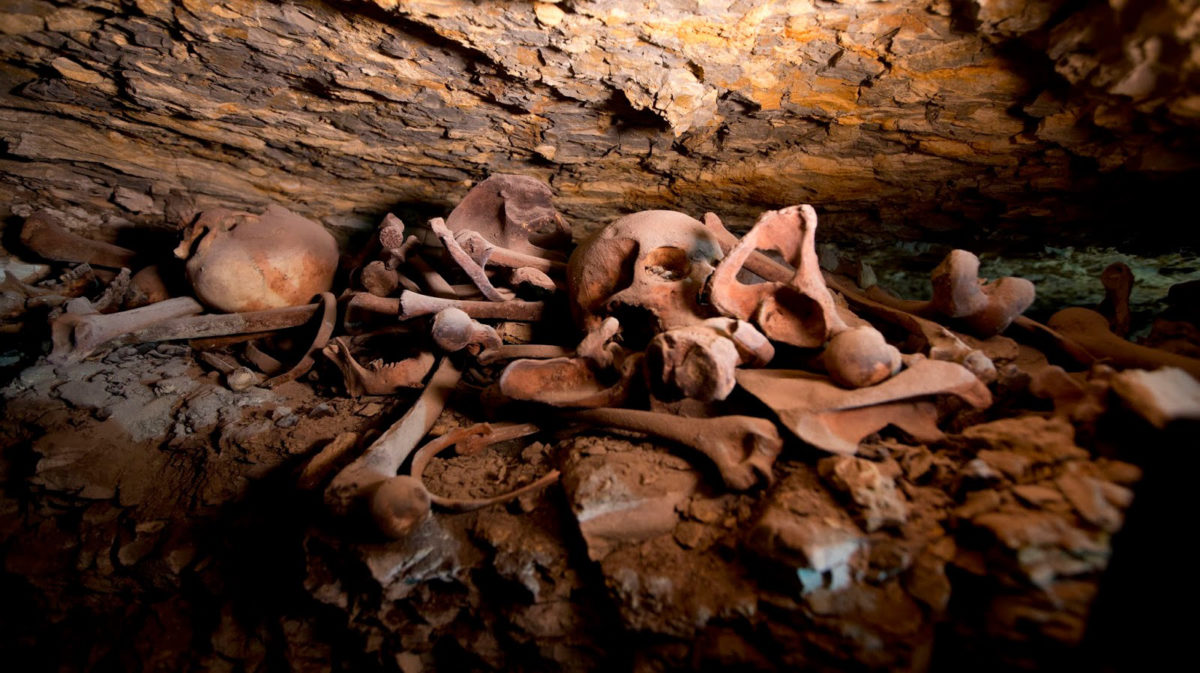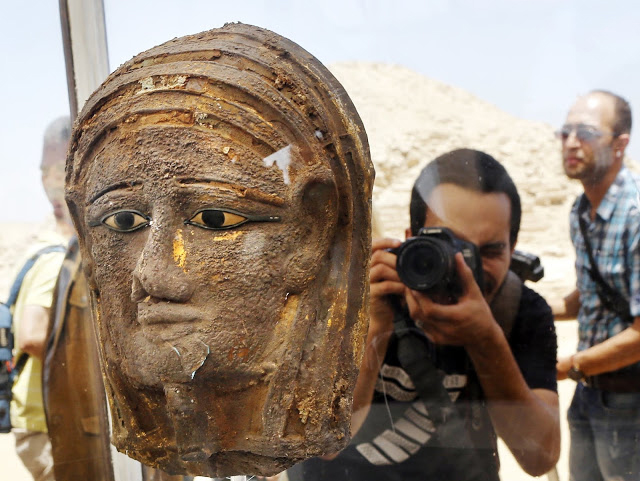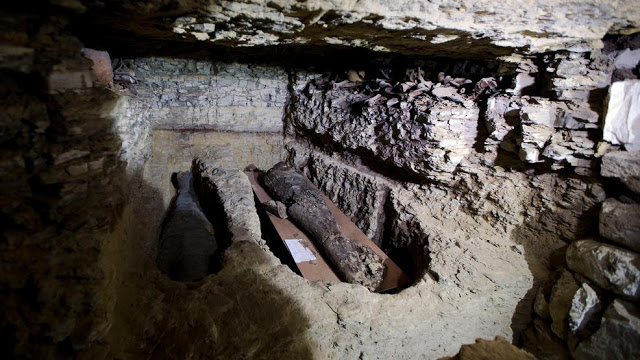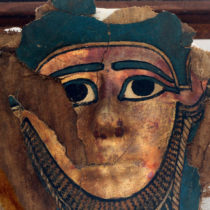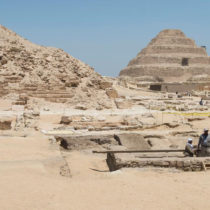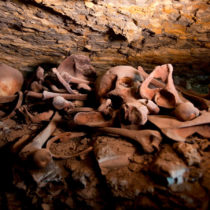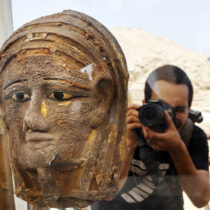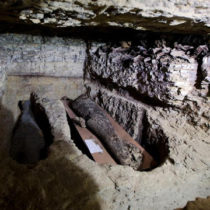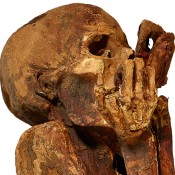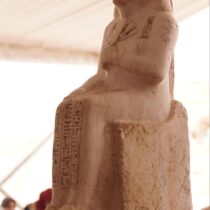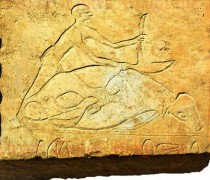In an international press conference at Saqqara necropolis, Minister of Antiquities Dr.Khaled El-Enany announces the discovery of a Mummification Workshop along with a communal burial place, uniquely has several burial chambers, dating to the Saite-Persian Period (664-404 BC) during excavation work carried out by an Egyptian-German mission from the Tübingen University South of king Unas Pyramid in Saqqara.
The mission has also succeeded to uncover a Gilded Sliver Mummy Mask in one of the burial chambers of the main shaft attached to the Mummification Workshop, dating to the Saite-Persian Period (664-404 BC). The Mask belongs to a person who held the titles of ‘the Second Priest of Mut and the Priest of Niut-shaes’.
Preliminary microscopic examination suggests that it is made of gilded silver, and the eyes are inlayed with a black gemstone (possibly onyx), calcite and obsidian. The wig was also inlayed with gemstones that were once embedded in color pastes. The mask measures 23 x 18.5 cm. A research and conservation project is currently being planned for the mask.
Dr. Ramadan Badry Hussein, Director of Saqqara Saite Tombs Project and Professor at Tübingen University describes the discovery as “rare” and explains that the mummification workshop has a rectangular building constructed with mud brick and irregular limestone blocks. It has an entrance on the southwestern corner that leads into an open area with two large basins and a mud brick ramp between them.
The two basins are surrounded with mud brick walls. It is believed that they were for the natron and the preparation of the linen bandages. He states that the Mummification Workshop includes also an embalmer’s cachette with a 13.00 m. deep shaft that ends with a rectangular subterranean chamber, where a large corpus of pottery was found. This pottery included vessels, bowls and measuring cups inscribed with names of oils and substances used in the mummification.
The Mummification Workshop has also a large shaft (K 24) in the middle, which is used as a communal burial place. It measures 3.00 x 3.35 m x 30.00 m. Shaft K24 uniquely has several burial chambers, including a complex of burial chambers cut into the bedrock on a depth of 30.00 m. They are arranged on the sides of two hallways. The first hallway has an intact burial chamber on the west, where three decayed wooden coffins were found on top of the western end of a large limestone sarcophagus. A fourth mummy is found to the north of that sarcophagus. A large number of faience ushabti figurines were also found along the northern side of the sarcophagus.
Dr. Hussein pointed out that the middle wooden coffin, on top of the sarcophagus, is badly damaged, and the mummy inside it has a gilded mask that was found on top of the face of the mummy. The wooden coffin was once plastered and painted with an image of the goddess Nut, the mother of the god of the dead, Osiris.
The decoration also includes the titles of the owner of the mask along with his name. He is the Second Priest of the goddess Mut and the Priest of the goddess Niut-shaes, a serpent form of the goddess Mut. The theophoric name of the owner of the mask includes the name of the goddess Neith, the patron goddess of Dynasty 26. Pieces of the painted plaster carrying the rest of his name are still missing, and the mission is collecting more of them in order to read the full name of the deceased.
The Mission of the University of Tuebingen to Saqqara has started the implementation of state of the art technology in the documentation and recording of monuments, particularly the laser scanning and photogrammetry techniques. The Mission’s digital documentation activities included creation of 3D photogrammatic models and laser scans of the burial chambers of Padinist, Director of the Storage Department of the Royal Palace, Psamtek, Chief physician and Commander of the Libyan Mercenaries, and Amentayefnakht, Commander of the Recruits. The Mission also conducted a conservation project of the polychrome reliefs and inscriptions of these burial chambers.
